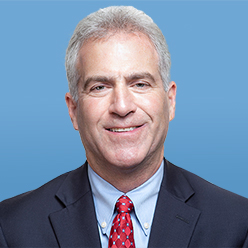Panicked by President Trump’s decision not to invite Europe to the table as his team discusses Russia-Ukraine peace with top Russian officials, French president Emmanuel Macron convened a meeting in Paris last Monday with British, German, and other European leaders to decide how to respond.
However, as European leaders chatted at the Elysee Palace, the rifts that plague Europe when it seeks a united front on military, diplomatic, or economic matters were already apparent. On the one hand, British prime minister Keir Starmer said he’d consider sending troops to Ukraine to guarantee its security after a peace agreement. On the other hand, German Chancellor Olaf Scholz called the idea “premature” and “highly inappropriate.” Polish officials also dismissed the idea of a Polish military role in Ukraine.
The differences between European leaders over a joint military presence in Ukraine and broader matters related to Trump’s diplomatic overtures to Russia highlight the perils of assuming that Europe has the political wherewithal to, as Defense Secretary Pete Hegseth urged the other day, “lead from the front.”
Can Europe do it? And what happens if it can’t?
American calls for more European leadership and less American involvement on the continent—and the risk of European paralysis (as member nations struggle with their own constituencies at home and challenges abroad)—could incentivize more Russian aggression, de-stabilize Europe, and leave the United States to confront emboldened adversaries in Moscow, Beijing, and elsewhere.
Global leaders tend to speak of Europe the same way they speak of Russia, China, and other nations. However, to state the obvious, Europe is not a nation. It’s a collective that, on multinational matters, works through multilateral institutions, most prominently NATO and the European Union. Those institutions require consensus before acting and, not surprisingly, often struggle to find it.
What has tended to force consensus and maintain European unity, especially at key moments of international crisis, is American leadership. This has been true from the earliest days of the post-war era and remains the case today.
NATO, a product of the 1949 North Atlantic Treaty, was not the first postwar European defense alliance. Instead, NATO followed the Brussels Pact, which Britain, France, Belgium, Luxembourg, and the Netherlands inked in March 1948. Tellingly, Europe knew this treaty would not deter the Soviets from overrunning the continent since it did not include the United States.
In the ensuing years, whether officially through NATO or unofficially through makeshift Western coalitions, the West has not acted forcefully on military matters in the absence of U.S. leadership.
For instance, it was not until President Clinton chose to take decisive action in 1995 to stop Serbia’s aggression against Bosnia that NATO launched a bombing campaign that laid the groundwork for the U.S.-brokered Dayton Accords, which brought peace to Bosnia later that year.
Lest anyone doubt the importance of U.S. leadership, compare the Western response to Vladimir Putin’s invasion and annexation of Crimea in 2014 to the Western response to his invasion of Ukraine in 2022.
For the former, President Obama chose not to send arms to Kyiv, imposed only minor sanctions on Russian individuals and private institutions, and largely eschewed diplomatic efforts to end the war. Despite its concern over Putin’s continental aggression, Europe did not come together to take bolder action on its own. In the end, the West came to accept Russia’s seizure of Crimea (if not officially).
For the latter, President Biden chose to oppose Putin’s invasion forcefully, crafted a broad coalition of Western nations to coordinate a comprehensive strategy, and worked closely with those nations to provide increasingly lethal arms to Kyiv and impose increasingly tough sanctions on Moscow. It is only because of those U.S.-led actions that, to date, Ukraine has rebuffed Russia’s attempted conquest.
Now, Trump and his team are calling for a Russia-Ukraine peace agreement, acceptance of Crimea as a part of Russia, no Ukrainian membership in NATO, and security guarantees for Ukraine that are backed by European and non-European—but not American—troops.
“Safeguarding European security must be an imperative for European members of NATO,” Hegseth declared, explaining that Europe’s security will not be Washington’s highest priority. “As part of this Europe must provide the overwhelming share of future lethal and nonlethal aid to Ukraine.”
To make that happen, Trump is urging NATO members to boost their defense spending to 5 percent of their gross domestic product, though NATO’s benchmark is 2 percent and Washington itself spends only about 3 percent.
Will Europe, acting on its own after a peace agreement that it played no role in shaping, step up forcefully enough to deter Russia from resuming its war against Ukraine and moving on to Eastern Europe?
All things considered, this seems like an awfully risky wager for the new team in Washington to make.
